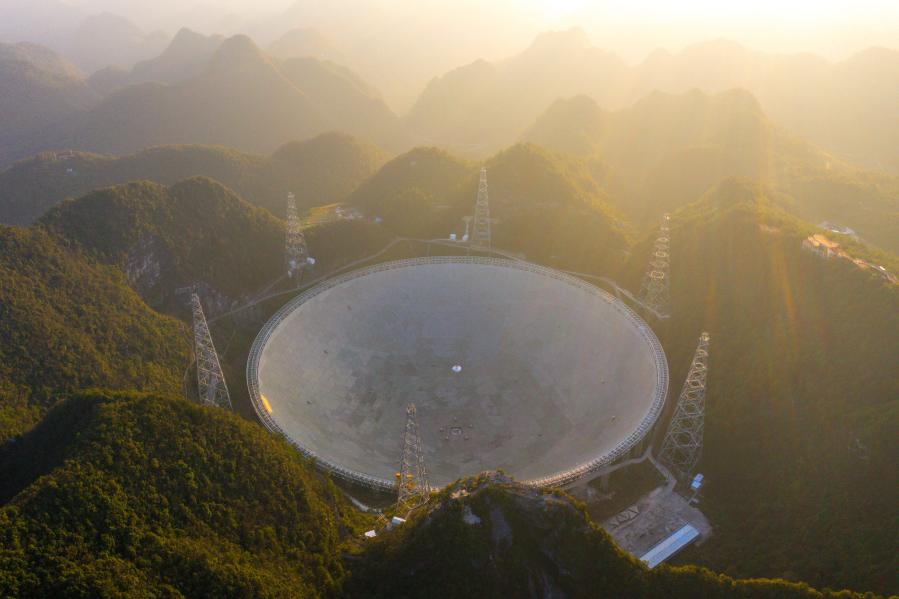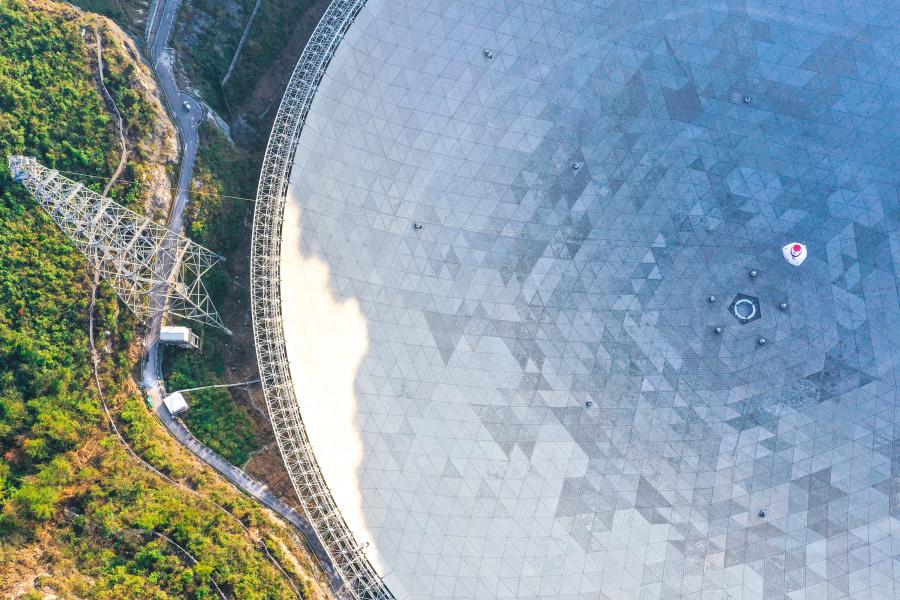
Using the Five-hundred-meter Aperture Spherical Radio Telescope (FAST), also dubbed as the "China Sky Eye," scientists have identified 509 new pulsars, which is four times of the total amount of pulsars identified by other telescopes around the world.
Pulsars, or fast-spinning neutron stars, originate from the imploded cores of massive dying stars through supernova explosions. With their high density and fast rotation, they are an ideal laboratory for studying the laws of physics in extreme environments.
Located in a naturally deep and round karst depression in southwest China's Guizhou Province, FAST started formal operation in January 2020. It is believed to be the world's most sensitive radio telescope.

Aerial photo taken on Dec. 19, 2021 shows a panoramic view of China's Five-hundred-meter Aperture Spherical Radio Telescope (FAST) under maintenance in southwest China's Guizhou Province. (Xinhua/Ou Dongqu)

Photo taken on Dec. 19, 2021 shows a view of China's Five-hundred-meter Aperture Spherical Radio Telescope (FAST) under maintenance in southwest China's Guizhou Province. (Xinhua/Ou Dongqu)

Aerial photo taken on Dec. 19, 2021 shows a view of China's Five-hundred-meter Aperture Spherical Radio Telescope (FAST) under maintenance in southwest China's Guizhou Province. (Xinhua/Ou Dongqu)

Aerial photo taken on Dec. 19, 2021 shows a view of China's Five-hundred-meter Aperture Spherical Radio Telescope (FAST) under maintenance in southwest China's Guizhou Province. (Xinhua/Ou Dongqu)

Aerial photo taken on Dec. 19, 2021 shows a view of China's Five-hundred-meter Aperture Spherical Radio Telescope (FAST) under maintenance in southwest China's Guizhou Province. (Xinhua/Ou Dongqu)

Photo taken with a fisheye lens on Dec. 17, 2021 shows staff members maintaining China's Five-hundred-meter Aperture Spherical Radio Telescope (FAST) in southwest China's Guizhou Province. (Xinhua/Ou Dongqu)

86-10-68597521 (day)
86-10-68597289 (night)

52 Sanlihe Rd., Xicheng District,
Beijing, China (100864)

